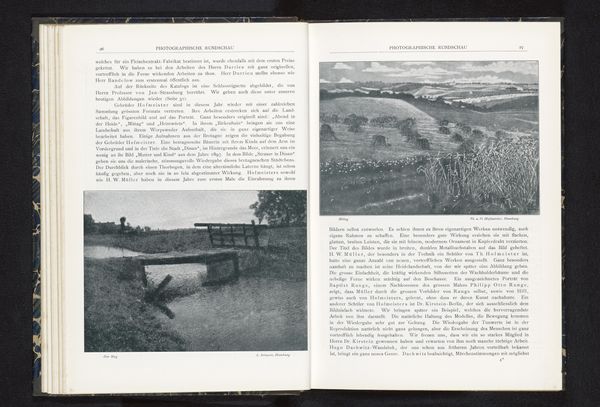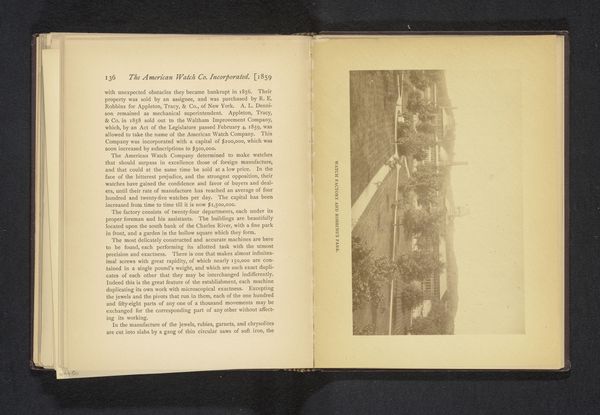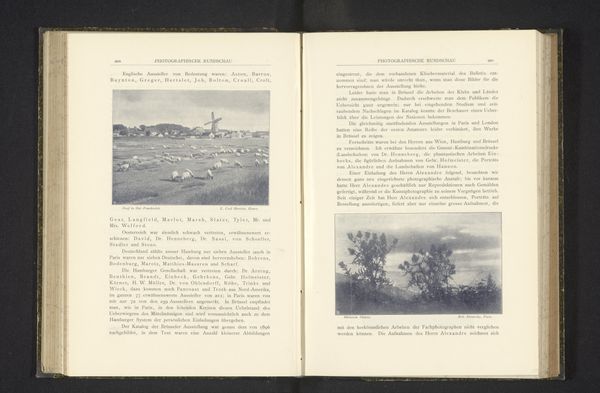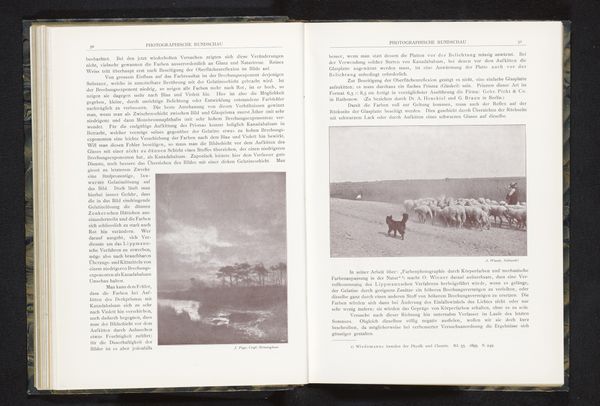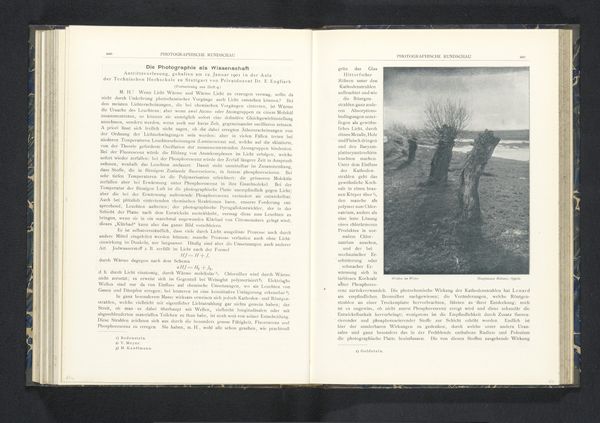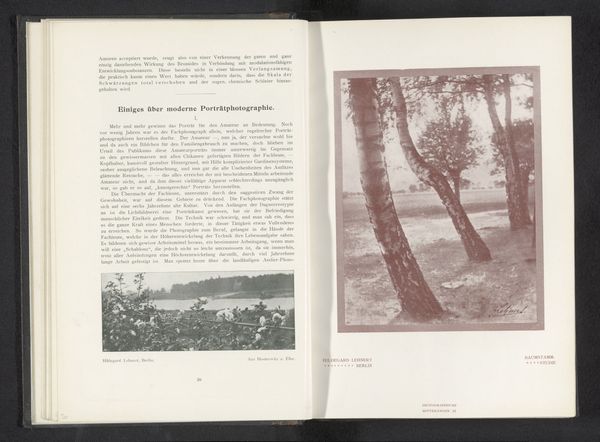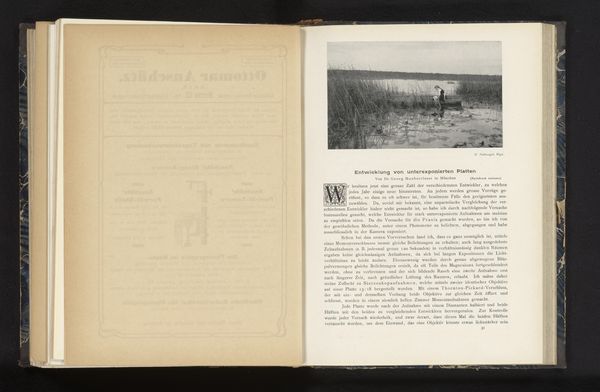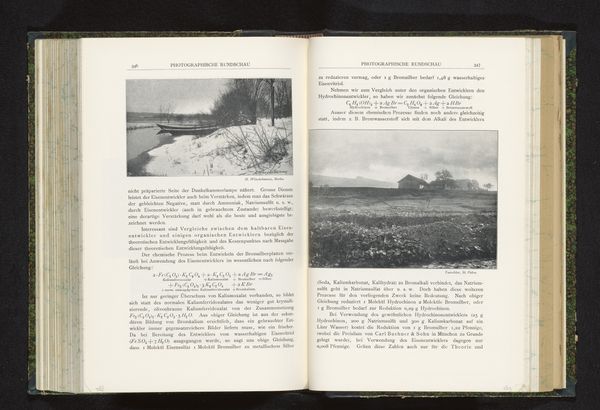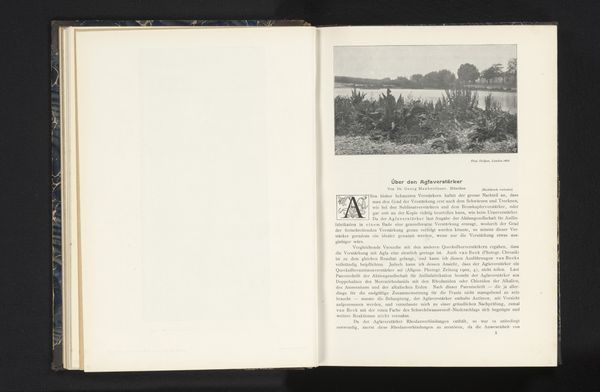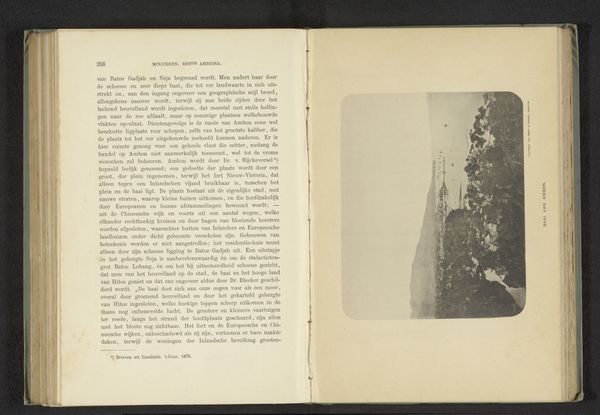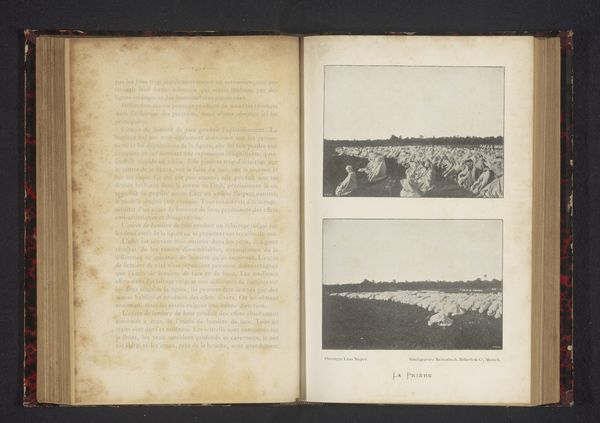
print, photography
# print
#
landscape
#
photography
Dimensions: height 230 mm, width 118 mm
Copyright: Rijks Museum: Open Domain
Curator: What a deceptively simple image. Before 1899, Th. u. O. Hofmeister captured what is titled, "Veld met bloeiende bloemen" a photograph presented within what looks like a bound volume. Editor: My immediate impression is one of quiet desolation, a very stark, almost ghostly monochrome landscape. The composition is strikingly simple; the horizon is barely there, creating a very shallow depth of field. Curator: It is certainly a picture that speaks to me about the social conditions in which photographic books were a prominent way of recording and sharing views, somewhat aligned to scientific treatises and artistic printmaking practices. Photography at this time was emerging into wider artistic circulation. Editor: True, and in observing the application of light, consider how the varying textures—from the fluffy, ethereal blooms to the somewhat murky water and scrubland—give us all of the information. These are rendered so deliberately using shade, giving the composition a beautiful visual rhythm. I am drawn to that repeating pattern that almost fades from existence with the out-of-focus single tree, way beyond. Curator: That tension speaks to the period in history and photography's own sense of progress into new creative possibilities for amateur camera clubs. Images of nature, made as accessible knowledge. Editor: Agreed, the composition, rather than being a straightforward celebration of nature, perhaps invites us to ponder our relationship with the landscape in a pre-industrial context. Notice how, even in a seemingly ‘natural’ setting, there are subtle markers of human influence that bring historical concerns regarding progress, industrial development, or changing notions of the picturesque into mind. Curator: Right. When placed against its historical context, the starkness we observed might even represent an early observation of what became a very poignant debate, within artistic photography, that sought to balance commercial motivations and social concerns with personal and artistic endeavors. Editor: Ultimately, that’s where its strength resides – the ability to be at once immediate in impact and yet deeply nuanced, inviting consideration from any who consider it closely. Curator: A balance between its material status as part of a published document, and its purely aesthetic qualities makes a fine counterpoint of form.
Comments
No comments
Be the first to comment and join the conversation on the ultimate creative platform.
